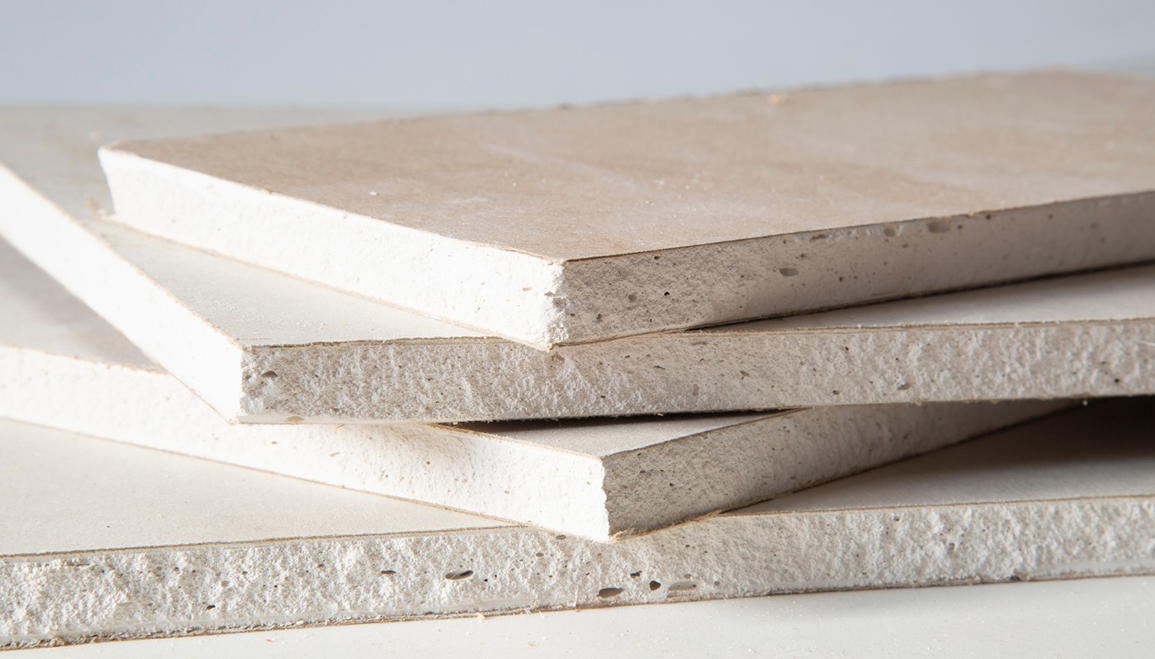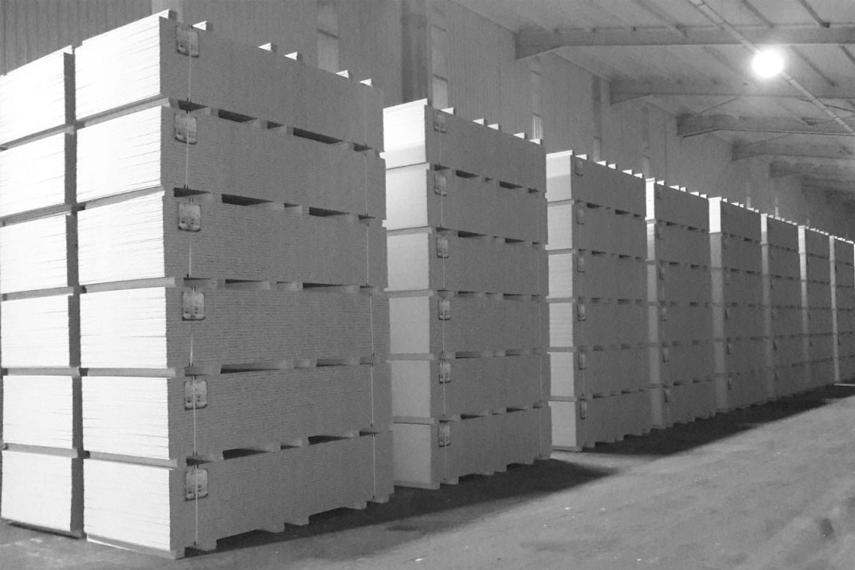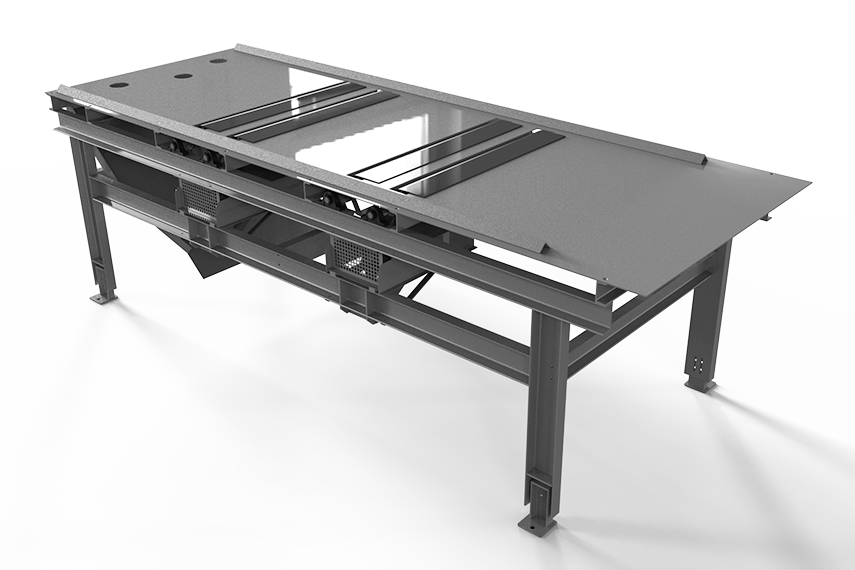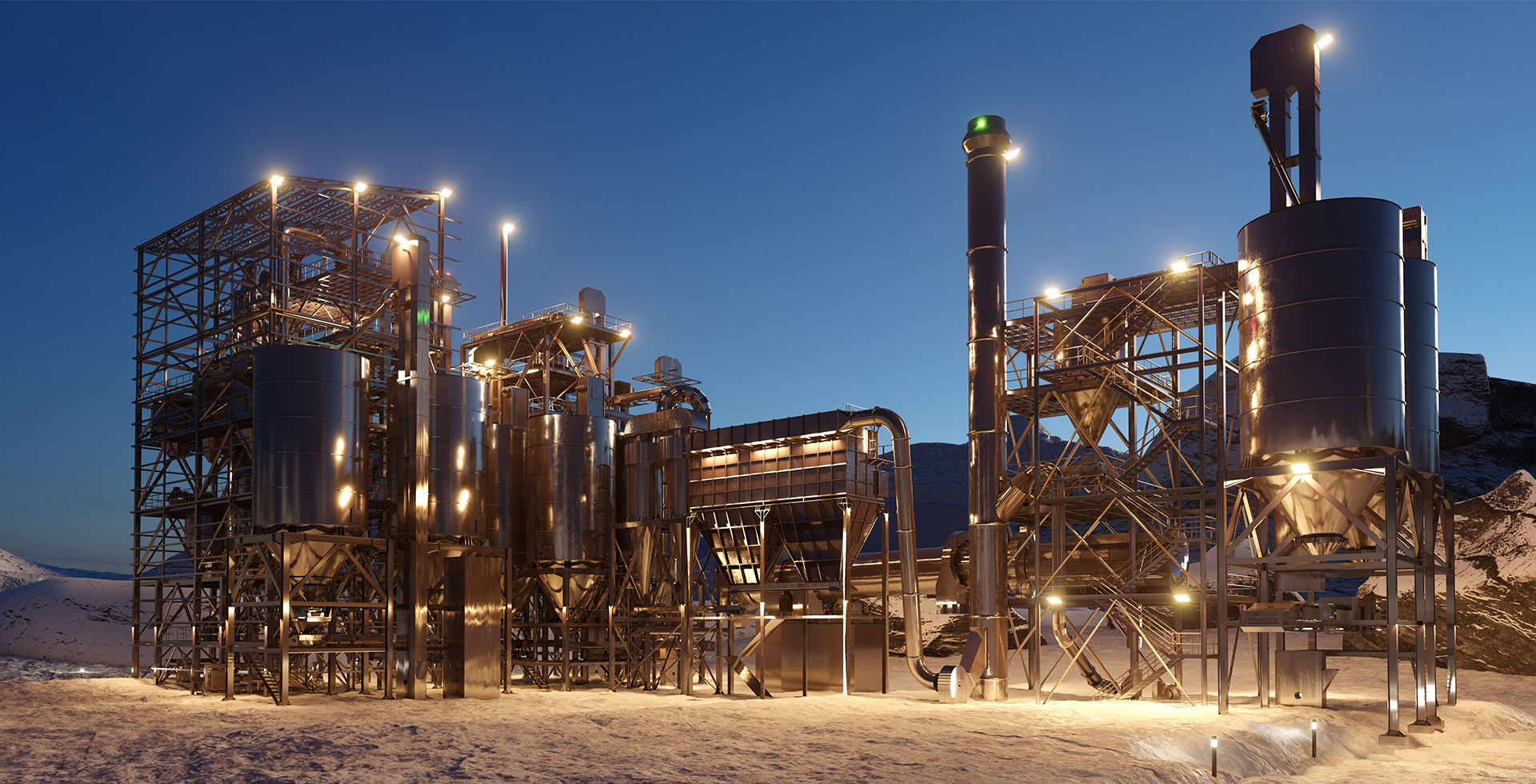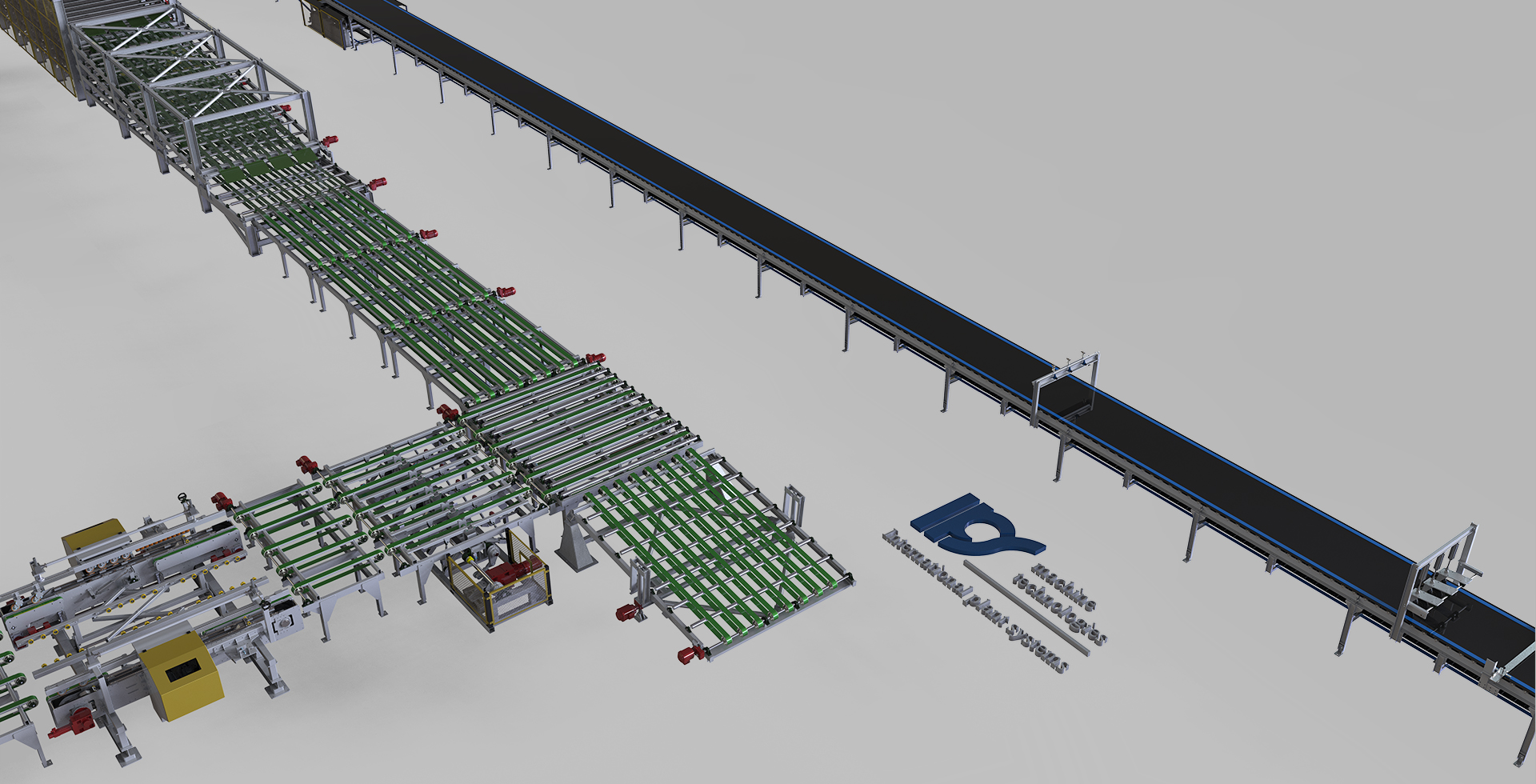Consistency Starts Here
Dry Materials
and their preparation
Dry materials used in the production of plasterboard typically include:
- Calcined gypsum powder - main raw material of the production.
- Dry additives - chemical and other additive, such as retarders, accelerators, binders, etc.
- BMA (also known as HRA) – a critical setting controller.
- Other dry raw materials – cement or perlite, depending on the formulation.
Each material plays a specific functional role in the gypsum core, and must be handled with care to maintain flowability, mixing balance, and chemical performance.
Dry Additives:
Tiny Inputs, Big Impact
Dry additives are stored in dedicated additive bins, each equipped with:
- Volumetric dosing systems or gravimetric (loss-in-weight) feeders
- Screw conveyors that transfer the dosed material directly into the mixer inlet
These additives may include:
- Starch - for bonding paper to core.
- Glass fiber - for impact or fire resistance.
- Setting modifiers – like citric acid or aluminum sulfate.
- Fillers or densifiers – such as calcium carbonate or talc.
Accuracy in dosing is critical, as even small fluctuations (±1–2%) can alter setting time and board strength.
BMA / HRA:
The Hidden Engine Behind Controlled Setting
BMA (Ball Mill Accelerator), also known as HRA (High Reactivity Accelerator), is a finely ground mixture of calcium sulfate hemihydrate and accelerants. It's used to fine-tune the setting time of the gypsum slurry — particularly crucial in high-speed production environments.
- Stored in a sealed, dry bin due to its sensitivity to moisture
- Dosed via fine screw feeders to maintain a consistent and ultra-low addition rate
- Delivered with exceptional precision, often in the range of 100–300 grams per ton of gypsum
An overdosage or underdosage of BMA can cause either premature setting in the mixer or late setting on the board line — both of which are production-critical faults.
Calcined Gypsum Powder:
The Core Material
The majority of the dry mass in plasterboard is calcined gypsum (CaSO₄·½H₂O). This material forms the backbone of the board and directly impacts:
- Setting kinetics
- Mechanical strength
- Surface smoothness
- Weight and density of the board
The powder is stored in a large silo and continuously monitored for:
- Moisture content
- Free water residue
- Particle size distribution (PSD)
From the silo, it is fed onto a weighing belt conveyor, which allows for real-time, continuous flow control into the mixer. This enables the production line to match output speed with exact formulation ratios.
The quality of gypsum calcination (alpha vs. beta hemihydrate) and the fineness of the powder influence everything from paper bonding to final board brittleness.
Other Raw Materials:
Tailored by Formula
Depending on the target product type — such as fire-resistant, moisture-resistant, or high-density boards — other dry materials like:
- Portland cement
- Perlite or vermiculite
- Silica sand or lightweight aggregates
may be added into the formulation. These materials are dosed either through auxiliary hoppers or inline blending systems, and their compatibility with gypsum chemistry must be carefully considered.
Dry Material Preparation:
Where Precision Weighing Meets Material Science
In plasterboard production, the dry preparation unit is more than just a feeding system — it’s the backbone of material dosing, responsible for delivering the exact composition of solids that define the board’s strength, setting time, density, and performance. Every component, from calcined gypsum to specialized additives, must be weighed and transferred with high accuracy to ensure consistent board quality.
Conclusion:
Consistency Starts Here
The dry preparation stage is where formulation meets execution. While the chemistry of gypsum sets the rules, the machinery and controls in the dry unit determine how precisely those rules are followed
- Accurate dosing ensures predictable reactions.
- Stable transfer guarantees uninterrupted production.
- Proper storage protects material integrity.
In future articles, we’ll dive into:
- • Types and functions of dry additives
- • BMA production and handling
- • Silo management and transfer system design
Stay tuned — because a perfect board always begins with a perfect blend.



